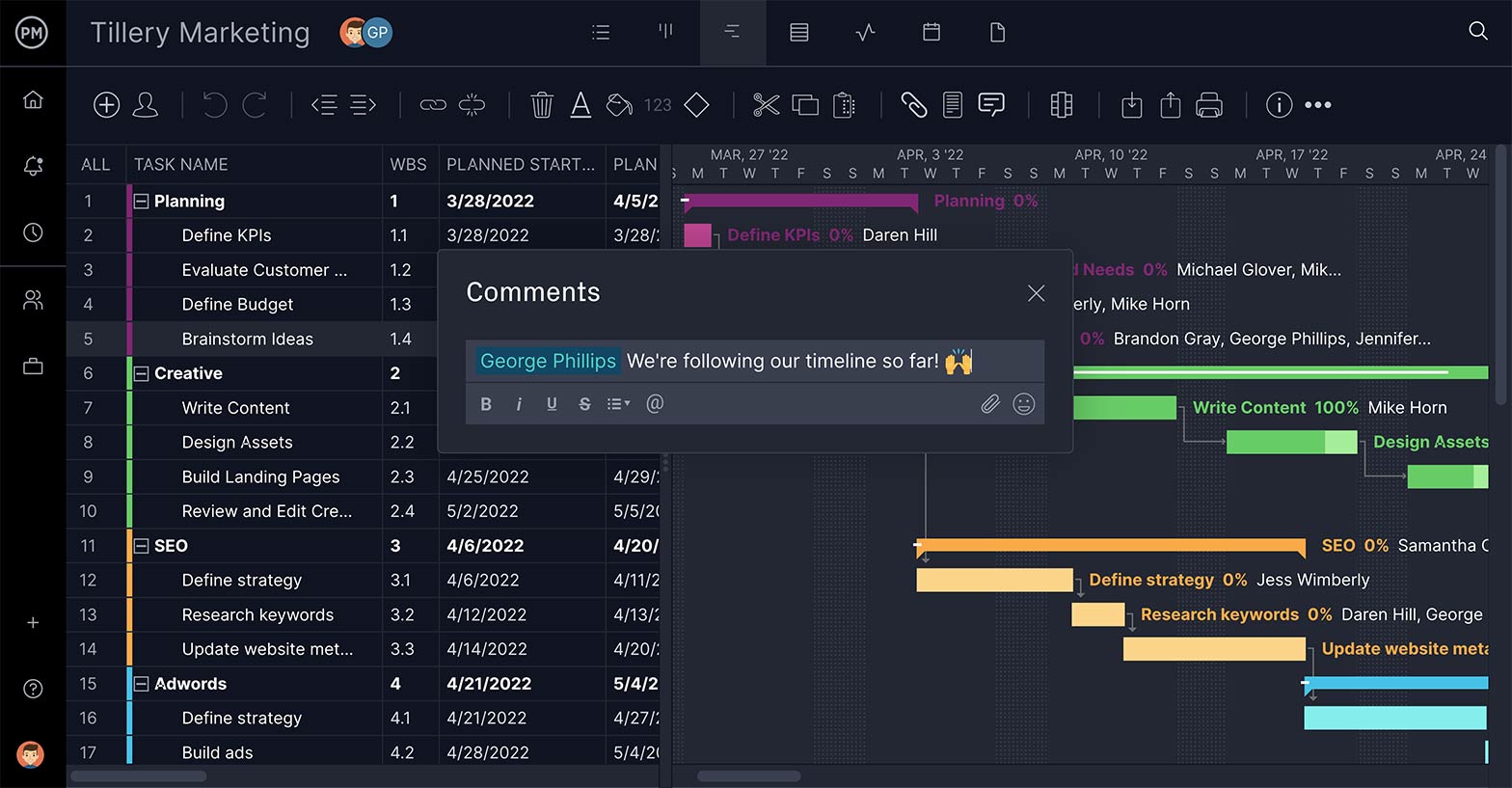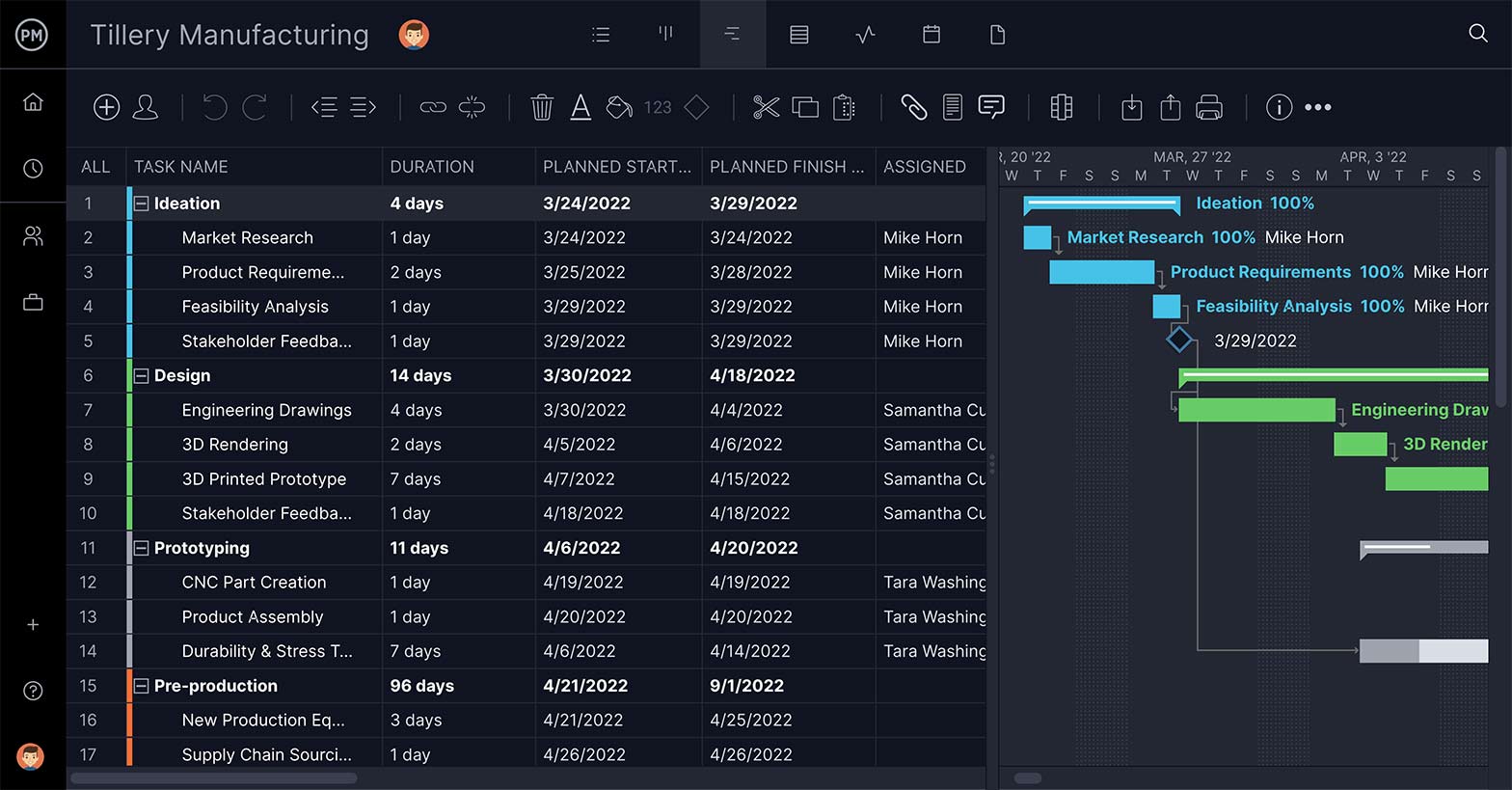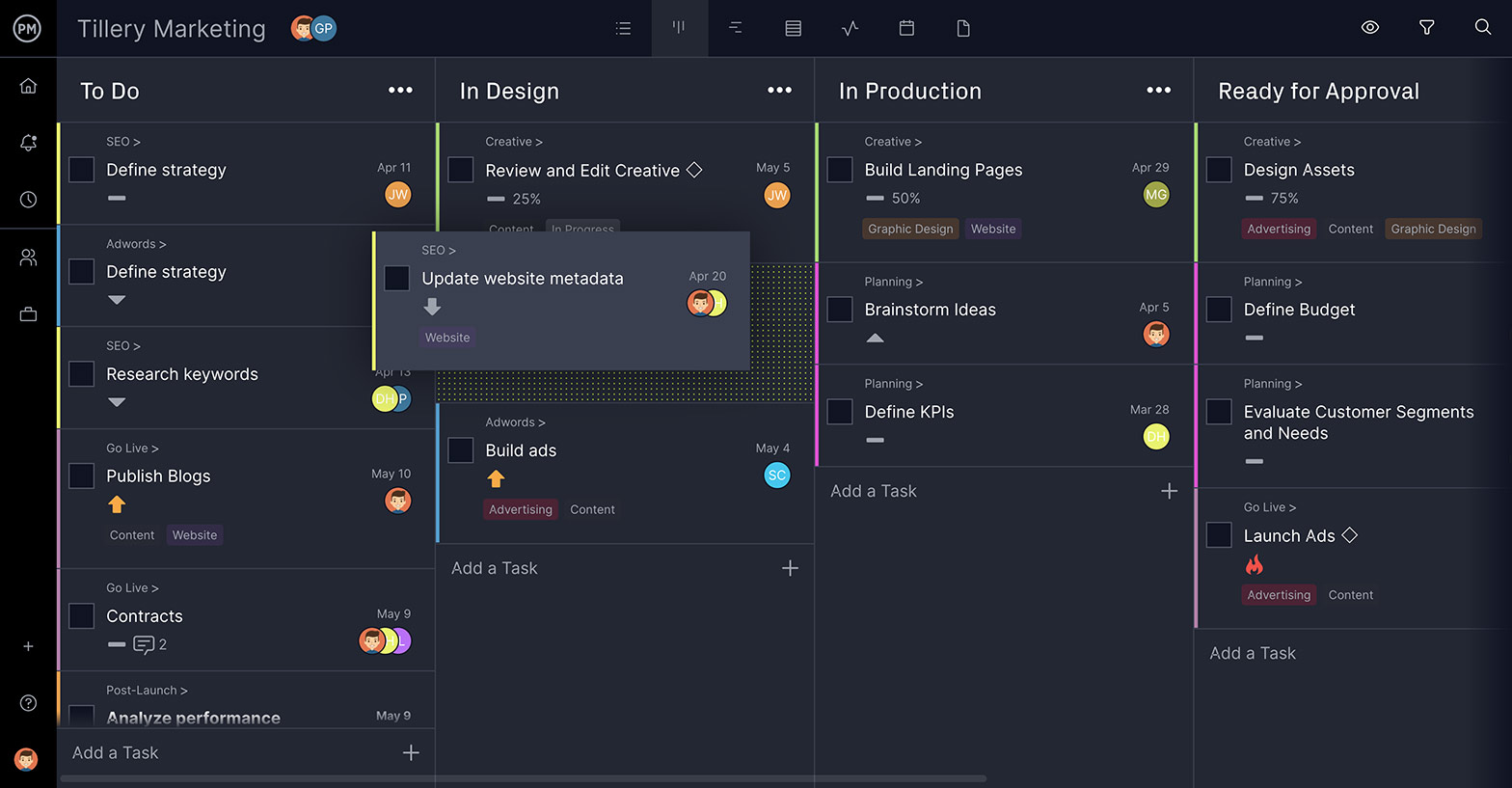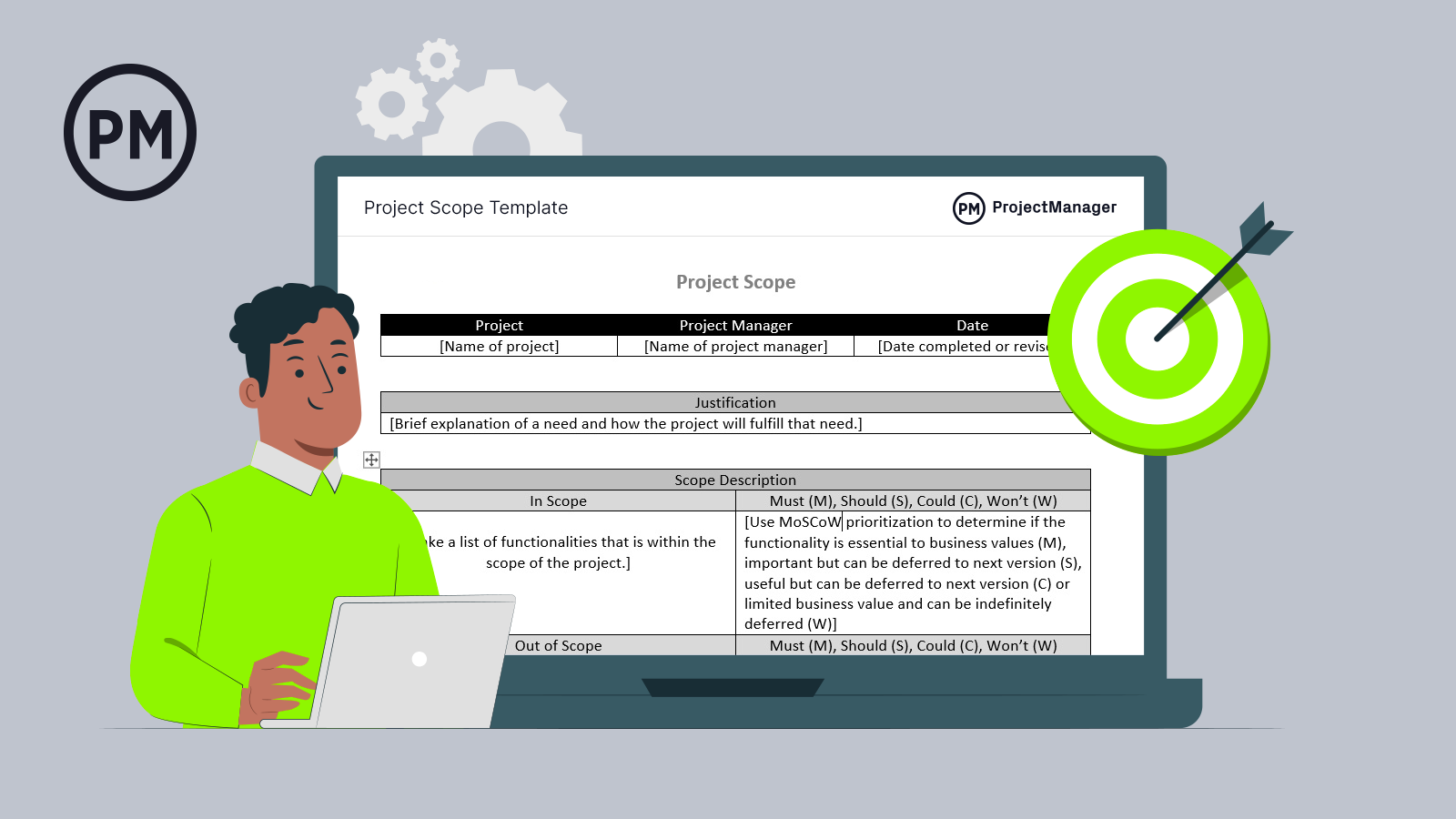A successful project is executed by understanding all its key elements. To achieve the goals of your project, knowing the project scope is essential. In order not to miss anything as you outline the project, use our free project scope template for Word.
Download it today and get your scope statement down right.
Why You Need a Project Scope Template
The project scope is a detailed outline that includes the activities, resources, timelines and deliverables of your project. It doesn’t end there, though. The project scope is extensive, and also lists the key stakeholders, processes, assumptions and constraints of the project.
ProjectManager’s project scope template is made to get you started fast and correctly by giving you a space to address all the elements of the project scope. Without this project scope template, you’d have to create the outline of the document yourself or, worse, do without it.

As important as it is to define what is and isn’t in your project and manage stakeholders, the project scope template does even more. It helps managers stay on track. They can see if deadlines are being met and if you have achieved the stated goals, deliverables, features and kept to the budget.
When to Use a Project Scope Template
ProjectManager’s project scope template is best used throughout the life cycle of the project. It helps keep the whole team focused on their common goals and objectives. This is especially helpful with complex projects, as the project scope template helps keep the project from growing past its established vision.
It will also help to prevent requirements that you have to rethink midway through the project. This keeps the final deliverable aligned with the original purpose of the project and the client’s expectations. Along these lines, the project scope template can also help keep the project on track and not fall behind schedule.
One way to do this is by setting up notifications, which a template can’t do, but some project management software can automate. ProjectManager is a cloud-based project management software that will automatically send notifications when deadlines are looming or your project scope has changed or been updated. You can configure the notifications to just get the alerts you want by email and in-app notifications. Try ProjectManager free today.

Who Should Update a Project Scope Template
Your project scope template is clearly an important document. It remains vital throughout the project, and everyone needs to know what’s outlined on it. That doesn’t mean the project scope template should be updated by everyone and anyone. There needs to be one person on the project team who owns the document.
Usually, this is the project manager. The project manager is the most familiar with the project and acts as a bridge between clients and stakeholders and the team that is executing their vision. That said, in some organizations, the responsibility for updating the project scope template will fall into the hands of a project administrator.
Again, this depends on how the workforce is organized. However, a project administrator is not making the decisions. They are simply doing the busy work for the project manager, who is the one making the decisions.
Why Use Our Project Scope Template
If you’re not ready to level up to project management software, use our free project scope template. It has everything laid out for you to make sure your project scope is covered:
- Project Information: The template has a top section to identify the project, project manager and the date the template has been completed or revised. Everything in the template can be customized to fit your project. You can add sections or remove those you don’t want to include.
- Justification: Start with the justification section of the project scope template. This is where you’ll write a brief explanation of the need your project is responding to and how you plan to fulfill this need.
- Project Scope: The next section describes the scope. It’s broken into two parts: in and out of scope. For both of those, you can list what is in and out of scope and then define the item by using the MoSCoW method of prioritization.
- Business Objectives: Next, you have space to add the business objectives of the project. This is a place to define the targets you want to achieve. These can include things such as the launch data, better customer satisfaction, greater conversion rates, etc.
- Project Deliverables: Following this, you’ll list the project deliverables. That is, what you’ll be producing during the project to meet your business objectives. Your final deliverable will be the goal of the whole project.
- Project Exclusions: Then, you’ll define the project exclusions. These are what lies just outside the boundaries of your project. This might include updated features that will be addressed in a later project.
- Constraints: Constraints are next. Here you’ll list every potential project constraint you can think of. These are things such as cost, scope, risk, resources and so on.
- Assumptions: Now it’s time to list the assumptions. These are like the constraints you listed above, but here you’re working to help your stakeholders to know what resources are going to be needed in order to complete the project.
- Cost Estimate: Finally, you’ll work on a cost estimate for the project. This financial forecast is accomplished by listing all your resources, estimating the cost for each of these line items, adding the actual cost when you know it, the estimated cost of each line time remaining in the project and any variance between the estimate and the actual cost.
How ProjectManager Helps You Manage Project Scope
The free project scope template for Word is a great tool to collect all the details of your project scope. But once you execute the project, it’s not the ideal tool to monitor and track the scope. If you want to better manage your project scope you need ProjectManager, which gives you real-time data that helps you make more insightful decisions.
Schedule Deliverables, Resources and Costs
Filling out the free project scope template makes it clear that there’s a lot you have to schedule. Gantt charts are the heavy-lifters when it comes to project planning. But any Gantt can list your tasks, add deadlines and set milestones. ProjectManager has a robust Gantt that does much more.
Not all tasks are equal, some can’t start or stop until another has started or stopped. Identifying these task dependencies is only the start. We let you link them to avoid delays. You can also filter the critical path and instantly see which tasks are essential and which are not. Then set a baseline to capture your schedule and be able to see if your planned effort matches your actual effort.

High-Level Tracking
Many software tools offer a dashboard but you have to set it up. Our real-time dashboard is embedded in the tool and works automatically. It makes calculations automatically and then displays the results in easy-to-read graphs and charts.
Get a high-level view of the project with live data on everything from project variance to workload, tasks and much more. You have your ears on the actual progress and performance of the project and can therefore respond quickly to issues and resolve them before they sideline your work.

Multiple Views
Managers, teams, stakeholders, all have their own preferred method of working. Most software doesn’t accommodate this. There’s no choice. ProjectManager is different. Our software has multiple project views that allow you to work how you want.
You know about the Gantt, but if you don’t want to use the timeline and prefer to see more columns like a spreadsheet, just toggle over to the sheet view. There’s a kanban board that teams love. They can manage their backlog and plan sprints, while managers get transparency into their workflow and can reallocate resources as needed to keep them working. List or calendar view, whichever you want, all are updated simultaneously. You’re always working on the most current version.

Other Free Templates to Help With Project Scope
Still not ready to upgrade? That’s okay. We have scores of free templates that can help you manage the scope of your project. Our template page has free templates for every phase of your project. Here are a few to help get you started.
Project Plan Template
You want to scope out your work at the beginning of the project. That’s part of the larger project plan. With our free project plan template, you can begin to define your scope and break the project down into smaller, more digestible bits.
Work Breakdown Template
Part of understanding the scope of your project is knowing all the tasks that will be required to meet your goal. Our free work breakdown template is a tool that helps you uncover every step on the journey of delivering your final outcome so you don’t miss any crucial steps.
Project Budget Template
The better your budget forecast, the smoother your project is going to run. It’s part of your project scope template, so use the free project budget template to get more accurate estimates on how much the whole project will cost.
Related Content
When you’re visiting to download our free project management templates, stay awhile. ProjectManager is an online hub of everything you need to know to work better. We have weekly blog posts, tons of tutorial videos and guide books, all for free. Here are a few that are related to the project scope.
- Project Documentation: 15 Essential Project Documents
- Project Scope Statement: Include These 7 Things
- How to Manage Project Scope
- What Is Scope Creep and How Can I Avoid It?
Once you’ve had a moment to look around the site, read our educational content and work with a few of the free templates, it might be time to try ProjectManager and see how it can help you plan and manage the scope of your next project. We have many levels of membership, with a starter plan that’s free forever, but you’ll want to use some of our more dynamic tools by moving up to the team or business model. Try ProjectManager today.
